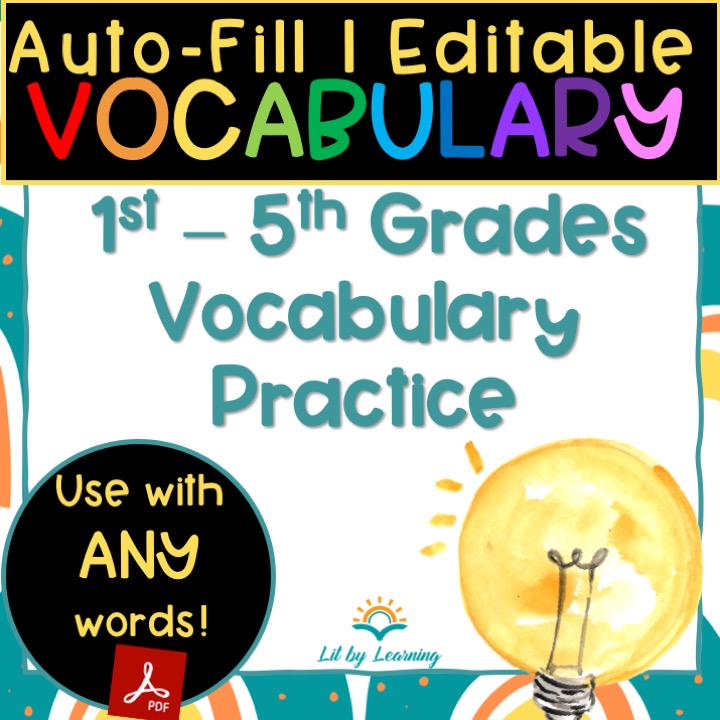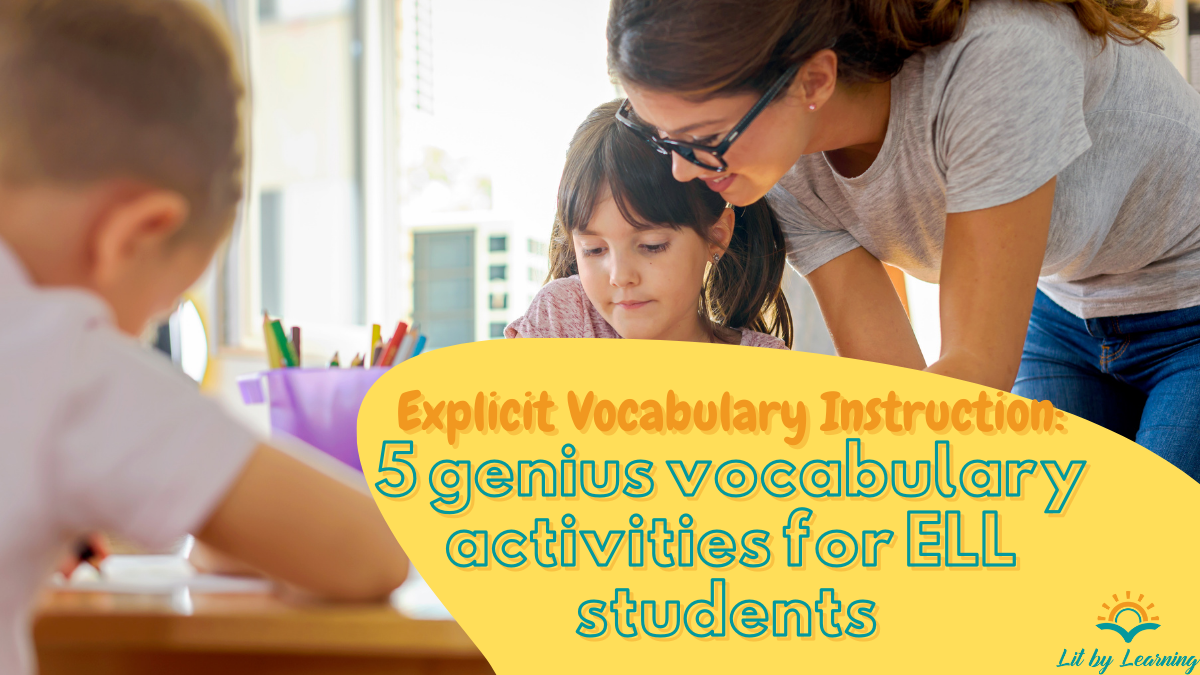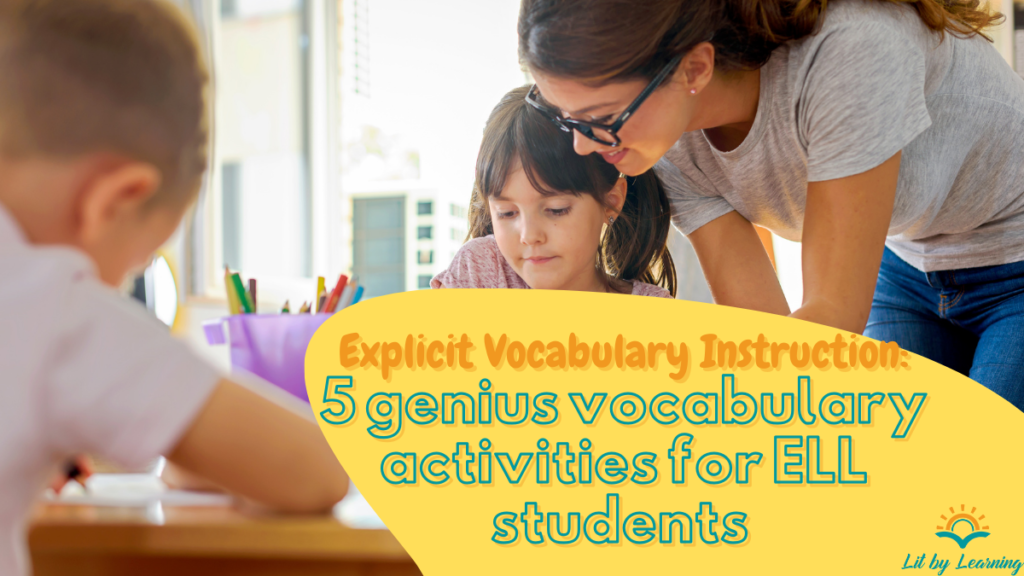
Caring ELL elementary teachers like you are always looking for more ways to support their multilingual students. Bilingual educators know that explicit vocabulary instruction is best practice, but how do we integrate it into our already busy schedules? These easy-to-implement explicit vocabulary instruction activities make incorporating vocabulary simple for your ESL students – and beyond!
Did you get your free guide yet?
Click on the image below to get your own FREE learner centered teaching guide sent directly to your inbox!

Why is explicit vocabulary instruction often overlooked?
Your reading block is already packed to the gills with phonics, Phonemic & Phonological Awareness, reading, and writing. Where in the world is vocabulary instruction supposed to fit in, especially for emerging readers? Even teachers with the best of intentions can get so caught in the learning-to-read excitement that explicit vocabulary instruction falls (way) to the wayside. Students aren’t necessarily reading hard-to-understand words on their own, so can’t that part… wait?
Time, as usual, is the most valuable resource in early elementary classrooms. As conscientious educators seeking the very best for our students, we guard our minutes like misers. Every moment counts!
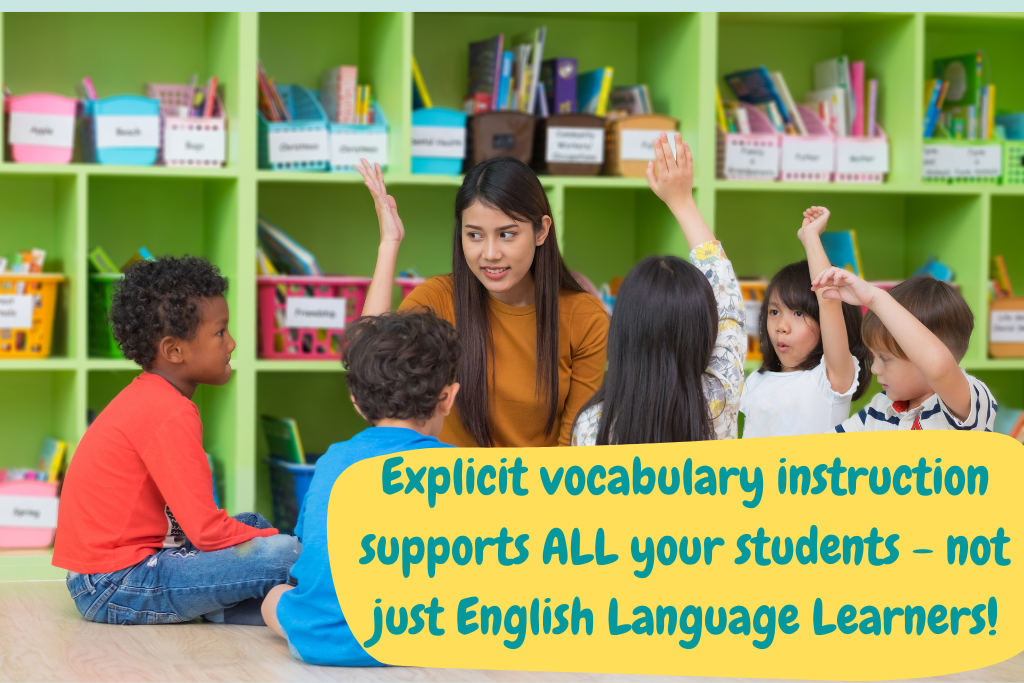
Explicit Vocabulary Instruction: Essential to ELL’s
Just like PPA, phonics & fluency, explicit vocabulary instruction is essential to all early readers. This becomes all the more true for ELL students who are learning language and literacy together. Their English-speaking peers often enter the early grades with around 5,000+ words and can use those as a base to learn more. ELL students, on the other hand, are tasked with learning alongside their peers AND playing “catch-up.” Even when their social language may indicate rapid growth, it’s important to remember that content vocabulary & academic vocabulary almost always lags behind. Read more below to find out about the different tiers of word types & what kinds of vocabulary instruction are most suitable to each!
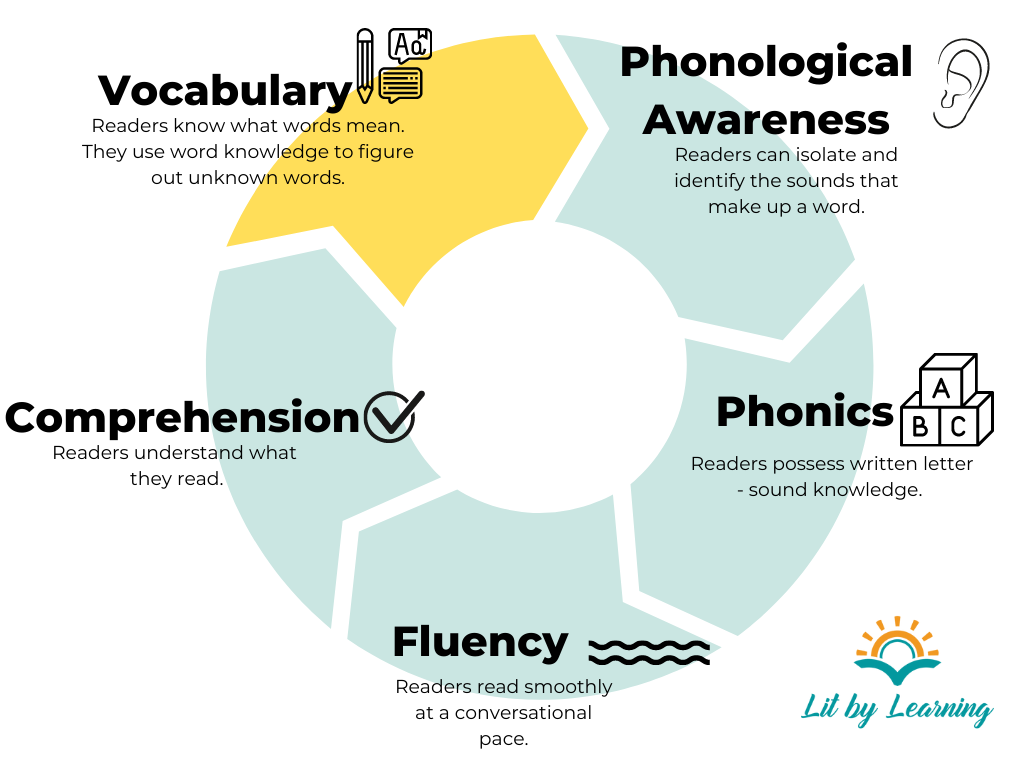
Vocabulary is an integral part of reading instruction!
3 tiers of words when teaching vocabulary
Words – all words – can be divided quite brusquely into three large tiers: 1, 2, and 3.
Tier 1: Everyday words
Tier 1 words are those that we use and hear as we go about our daily life. These types of words are high-frequency words in texts and are used socially. These are the words that students, be they ELL or non-ELL, will feel most comfortable using. Examples of Tier 1 words are: said, walk, table, tell, ask, etc. We learn these words implicitly. We pick up the meanings of them via absorption of walking through the day.
Tier 3: Domain-specific, content-focused words
Tier 3 words are usually situated within just one subject or content area. They are specific and targeted. Tier 3 science words may be habitat, ecosystem, and adaptation. Tier 3 math words include algebraic, equation, and divisible. These words are most often taught at a unit level and are deeply supported by textbooks and content texts. Most students – not just ELL’s – require heavy context and scaffolds to learn Tier 3 words.
Tier 2 words: Just right
Tier 2 words are right in the middle between Tiers 1 and 3. They can be general words like dangle and morose. They can also be cross-curricular academic words like compare, analyze, summarize, reflect, and debate. Tier 2 words are best taught explicitly through pre-planned, research-backed practices.
To conclude, the words in Tiers 1 and 3 shine in the spotlight whereas Tier 2 words are frequently skipped over. It can be easy to assume that non-ELL students already understand their meaning – and that ELL students don’t need them. However, research has consistently shown that the explicit instruction of these critical words benefits everyone. Read below about how to choose Tier 2 words.
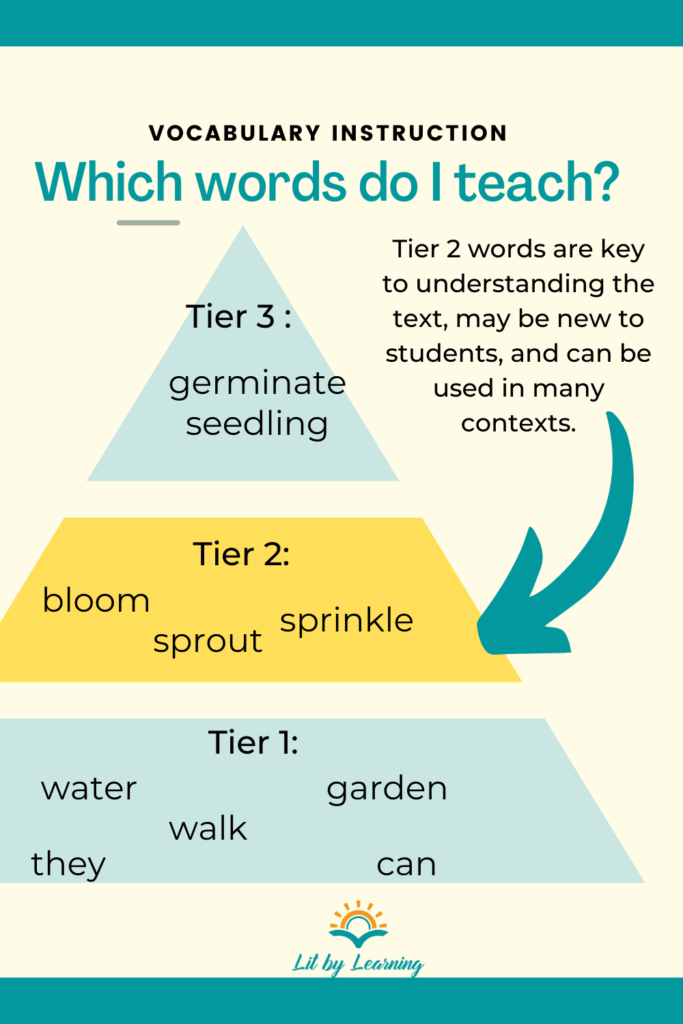
Selecting Tier 2 words
You know that you need to focus on Tier 2 words, but which ones? Read below!
Tier 2 academic vocabulary words: Go straight to the standards!
For your academic vocabulary words, head straight to the standards that your district uses and make a list for each one. Make sure to include both verbs (evaluate, determine, etc.) and other words (relevant, secondary, etc.) I highly recommend taking a step further to fully break down each standard (see my blog post here!), but at the very least, grab the academic terms!
Example: My first-grade class is working on the Common Core Standard: CCSS.ELA-LITERACY.RL.1.6 –
Identify who is telling the story at various points in a text. For this standard, I would draw out these Tier 2 academic words: identify, voice, narrator, inside/outside the story, and perspective.
All other Tier 2 words: turn to your texts!
To find your other Tier 2 words, turn to your texts! Take out the actual book and search for 5-7 words that stand out. Choose words that are a) applicable in other contexts and b) helpful in revealing the deeper message or theme of the text.
Example: To explore this concept, we look at a text that flips back and forth between narrators. The perfect words are those that are important to understanding the story. I also search out words that my students may or may not know already. In this example, I choose glared, grimmace, blurt, swift and furious. I loved these words because they help my students understand the story at a deeper level AND they’re usable across concepts. This might be the first time some students are seeing this word, but it won’t be the last!
Explicit Vocabulary Instruction: teaching vocabulary activities
#1 Infer the meaning!
I LOVE introducing vocabulary words using this easy routine! As a class, we examine how a word is used in our text and then read two more example sentences. Then, we talk about what we think it may mean! I ask students to discuss what kind of word it is (action, object, description) and together we make our own temporary definition. I really recommend NOT having an “official” dictionary definition at the end of this – it can make students feel like it wasn’t really a conversation, but more like a trick you were pulling on them.
#2 Make picture associations!
This is so easy and fun! Using google slides or your trusty printer, choose some images online that you would associate with the week’s vocabulary words. If possible, find some that would correspond with more than one word. Post the images one at a time and ask simply, “What word(s) does this make you think of?” Explain that there are no right or wrong answers. As long as a student can justify their reasoning, there’s was a rock-solid answer. I love how much this gets students talking about the words – and how it provides visual supports as a bonus!
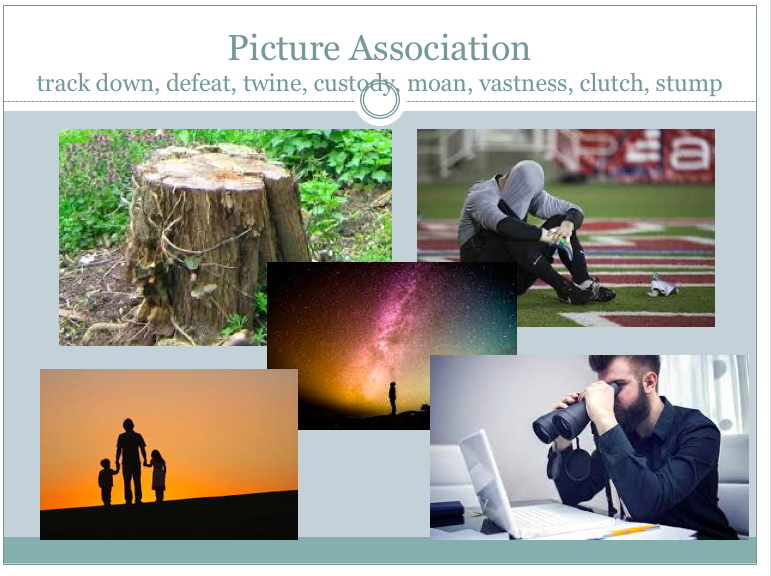
#3 Act it out!
Once students have a pretty good idea of what a word means, stick the week’s vocabulary words into a hat/bag/basket and play some good old-fashioned charades! 1-2 students will act out the word and the rest of the class has to guess which one they chose! It seems silly (and sometimes is!), but this whole-body dramatic strategy is not only engaging but highly effective!
#4 Play with analogies!
Do we remember analogies? I worked on analogies all the time as an early elementary student, but all but forgot about them until about 5 years ago. As a refresher, analogies model a relationship between two given words & provide a third that requires a match. They look like this: dog : bark :: cat : ______ and sound like this: “dog is to bark as cat is to blank.” Does this seem familiar? Using analogies as part of your explicit vocabulary instruction is an amazing way to really engage your readers in a game-like way. Ready to level up? Prompt students to create their own analogies for a friend to solve.
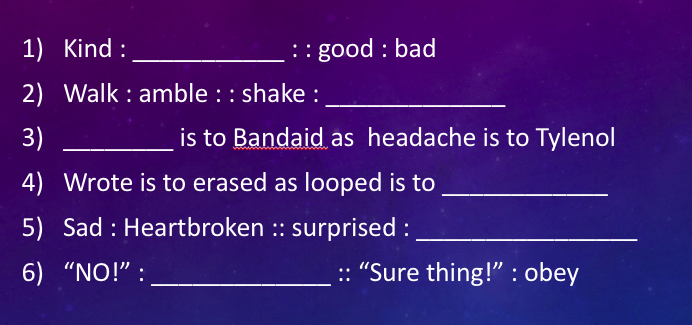
#5 Discuss synonyms and antonyms!
Finally, once your students’ understanding of the vocabulary words is solid, play with antonyms and synonyms! I use sentence starters like the ones below to get the conversation going.
When finding vocabulary word antonyms:
- If _____ is not _____, they must be _________. (If the kids are not swift, they must be slow.)
- Someone/thing that is not _____________ is probably ______________.
- If someone/thing is not ____________________, then we know they are ___________________.
When finding vocabulary word synonyms:
- Another way to say ___________ is _____________.
- If someone/thing is ______________, they are also _______________.
- We know that someone/thing that is _________________ is also _______________.
I love finding creative ways to display our thinking! Sometimes it’s simple color-coding (opposites in red, synonyms in green) on the board. For words that students need to know well, we dive more in-depth and create a “shades of meaning chart or board”. With the vocabulary word itself included, we then lay out total opposites to the left, then get closer to the word as we go right. Again, this visual component strengthens students’ recall, helping them to retain those important vocabulary words!
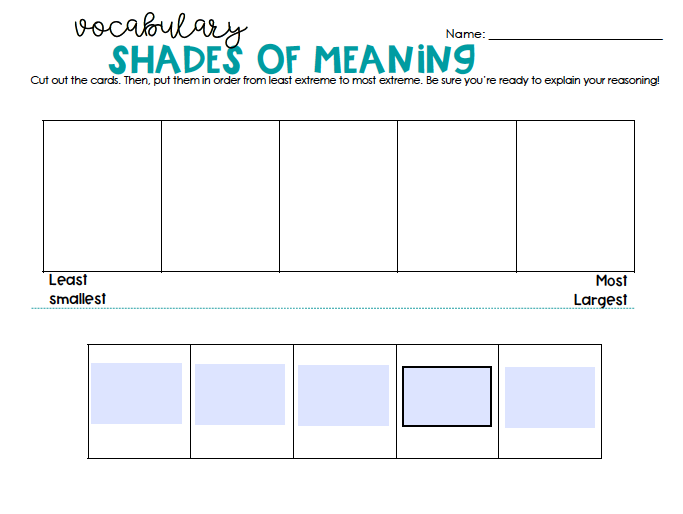
Thanks for reading!
I hope you found this post on explicit vocabulary instruction for ELL’s helpful! For all of these activities – and more! – make sure to check out my editable vocabulary resource, great to use with ANY words!
